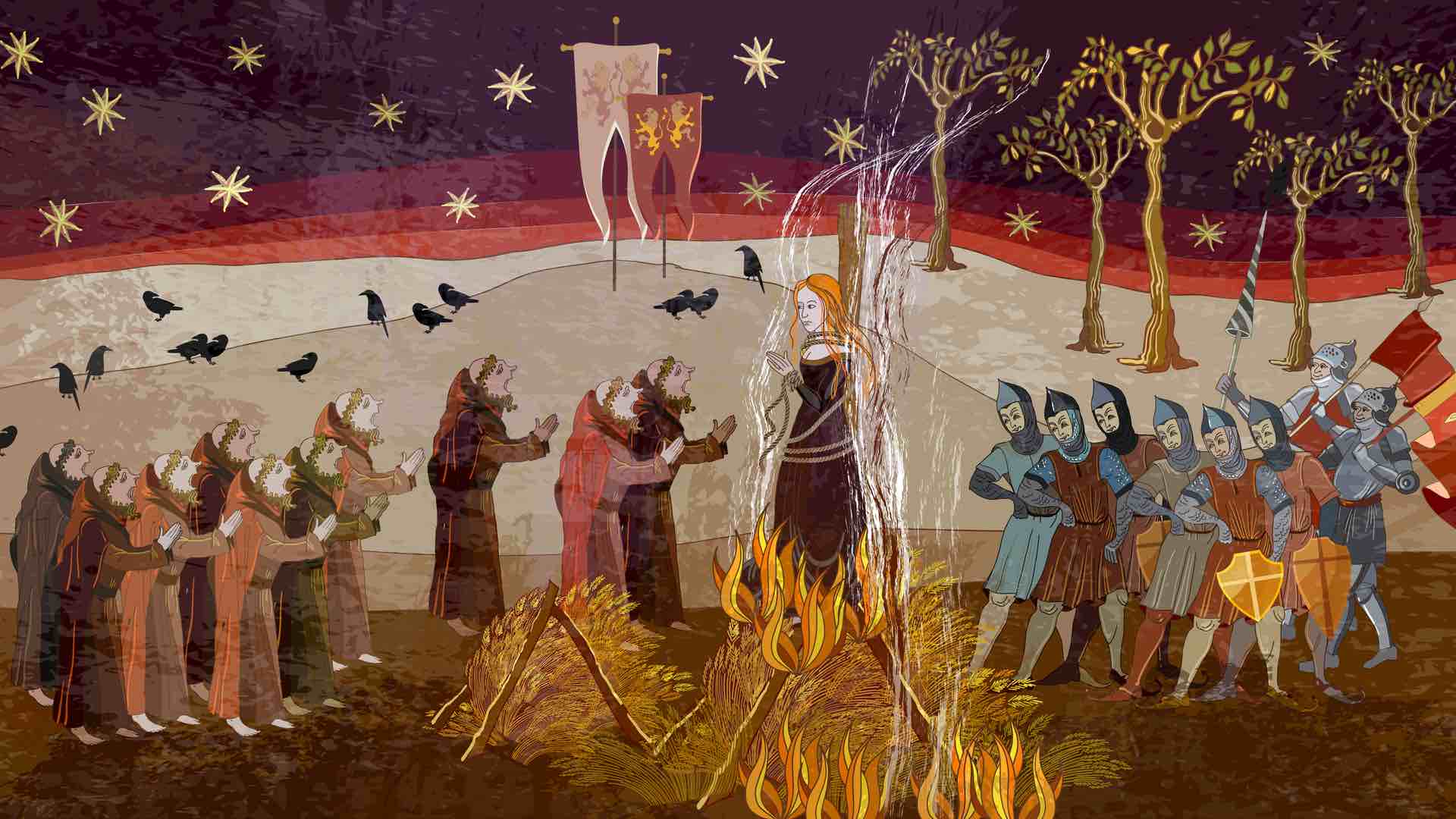When the Portuguese landed in Brazil in 1500, among the first things they did was hold a mass and plant a crucifix on the beach where they made first contact with the land’s native people, an area now located in the northeastern state of Bahia. The act symbolized the conquest of the territory by the Kingdom of Portugal, which was intrinsically linked to the Catholic Church.
Along with explorers and pioneers, Brazil soon began to receive a wave of Catholics keen on spreading the word of God to this new land. These Jesuits were explicitly tasked with catechizing indigenous communities, often ignoring the customs and centuries-old beliefs of these people, using every method at their disposal to convert them — including force.
As well as the Jesuits, Brazil’s indigenous people began sharing their land with foreigners arriving from all corners of the world, turning Brazil into something of a cultural meeting place, where people could practice rituals and worship that went against Catholic teachings.
European men and women often sought guidance from native witchdoctors when their Christian remedies and prayer were not enough to cure their ailments.
Once finding out about this supposed “religious deviation,” leaders of the Catholic Church decided to send visitors from the notorious Tribunal do Santo Ofício to Brazil. Created at the end of the Middle Ages, these tribunals aimed to combat any kind of manifestation that represented a threat to Catholic hegemony and “combat heresy.”
These visits were part of what was known as the Holy Inquisition, which had already terrorized Europe with their use and abuse of violence, all with the blessing of the Vatican.
In the second half of the 16th century, the Catholic Church began the Counter-Reformation, and one of its consequences was the strengthening of Catholic precepts in countries such as Spain and Portugal. The Holy Inquisition was seen as one of the main instruments for controlling and coordinating the conduct of Catholics.
Accusations of “religious deviation” came in many forms. Any baseless complaints or rushed deductions were enough for authorities to remove suspects from their homes and drag them before the Inquisition’s tribunals.
To facilitate access to the suspects, as soon as inquisitors arrived in a given town they would publicly announce the so-called “edicts of faith,” a form of official document declaring all the sins which could be reported to the tribunal.
Once arrested, suspects would be subjected to torture in the hope of receiving a confession. Among the most common punishments was cutting off the soles of the accused’s feet, greasing them, and placing the wounds on hot coals. Those who did not confess were burned at the stake.
Persecution of Jews
The Inquisition’s first visit to Brazil came in 1591, arriving in what are now the states of Pernambuco and Bahia to respond to suspicions of religious deviation.
In practice, this visit caused more fear than any tangible outcomes such as arrests. But the legacy of this particular inquisition changed the habits of the local communities, which were left afraid and keen to weed out “sinners,” lest they be accused themselves. People were urged to keep a watchful eye over their neighbors and snitching became standard practice.
Until then, there had only been two cases of ecclesiastical conviction in Brazil: those of Pero do Campo Tourinho — accused of blasphemy in Porto Seguro, close to where the Portuguese first landed according to official sources — and Jean de Bolés, a French Calvinist, also in Bahia.
The suspicions of heresy investigated by the Inquisition were mostly associated with the so-called “New Christians” — Jewish people who came from the Netherlands and France in search of profit from the sugar economy and converted to Christianity.
These New Christians were accused of only presenting as Christians, while continuing to attend synagogues and practice Jewish rituals. Other charges were brought against Protestants and women, often for witchcraft.
In the case of the New Christians, many did in fact continue to practice Judaism in rudimentary synagogues set up inside people’s homes, as well as marrying into “Old Christian” families. The threat of indigenous tribes on land and pirates at sea acted as a coercive force for these communities to assimilate into Catholicism.
It is worth noting that of the 13 ships that made up Pedro Álvares Cabral’s fleet on the voyage of Brazil’s “discovery” in 1500, 11 were led by captains with New Christian names.
In central Portugal, Cabral’s hometown of Belmonte was home to a large Jewish colony, and it is known that the famous explorer was descended from Jewish converts to Christianity.
During Dutch rule in northeastern Brazil (1624-1654), many Dutch Jews of Portuguese origin settled in Recife, the capital of Pernambuco state. There, they founded the Zur Israel and Maguem Abraham synagogues, the first of their kind in the Americas.
Many of these Jews left when the Dutch were kicked out of Brazil to the Caribbean and then on to New Amsterdam, now known as New York.
Two centuries of terror
Traditionally, history books cite three Brazilian inquisitions. The first, between 1591 and 1595, occurred in Bahia, Pernambuco, Itamaracá, and Paraíba, at a time when the Iberian Union sent several inquisitors to its colonies. The second, from 1618 to 1621, returned to Bahia, this time with a greater focus on the search for New Christians. The third, from 1763 to 1769, visited the province of Grão-Pará and Maranhão, being based in the city of Belém.
Archives of these inquisitions are located at the Torre do Tombo in Lisbon. They cite the names of 40,000 people who were persecuted, but do not classify them by their place of birth. Nor is it clear whether these were the only inquisitions.
Between 1627 and 1628, another visit was discovered, passing through Rio de Janeiro (where the population threatened the inquisitor with stoning), São Paulo, and São Vicente.
According to official data, the Brazilian inquisition resulted in 1,074 prisoners: 776 men and 298 women. Forty-eight percent of the men and 77 percent of the women were New Christians. Twenty men and two women from Brazil were burned at the stake in Lisbon, all because they had practiced Judaism.
Museum preserves inquisition history
With the discovery of large amounts of gold, diamonds, and other precious stones in the mountains of what is today Minas Gerais state — the second most populous and wealthiest in the country — the region became one of the most important treasures for the Portuguese crown during the colonial period.
Attracted by the mineral wealth, New Christians from Portugal and northeastern Brazil flocked to Minas Gerais, in particular to its then-largest town of Ouro Preto. Many of them would be executed in Lisbon by the Inquisition.
In August 2012, the Brazilian Inquisition History Museum was opened in Belo Horizonte, today the capital of Minas Gerais state. The archive is home to original documents from the time of the inquisition, as well as examples of torture equipment. In Belo Horizonte, every March 31 is dedicated to the memory of the Inquisition’s victims.











 Search
Search






































